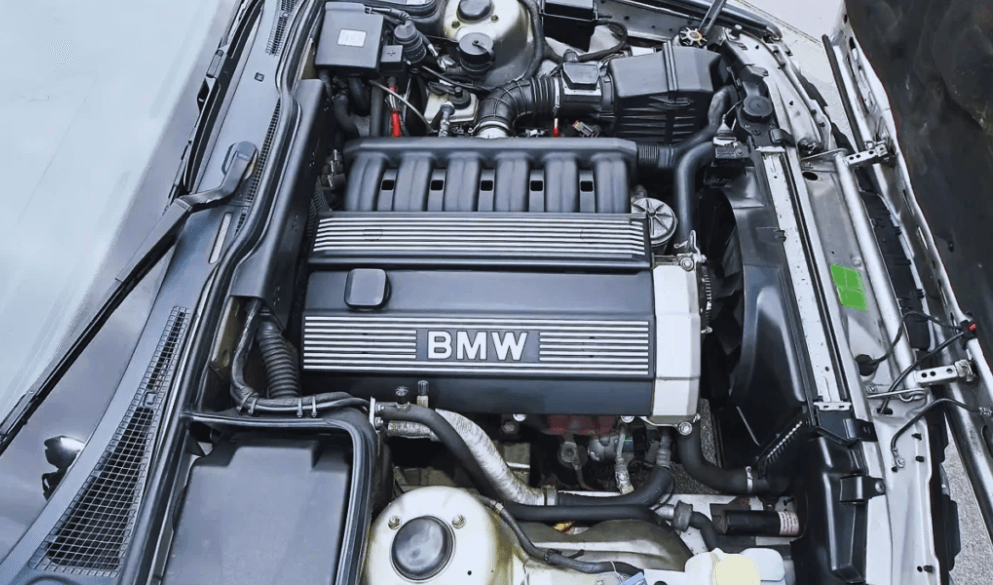It was the BMW M50 engine first introduced in the early 1990 was a major change in BMW inline-six engines.
It was renowned for its sophisticated technology and advanced technology, it was the M50 was a powerhouse of BMW and could be found various models, including E34 5 Series, E34 5 Series and E36 3 Series.
History and development
BMW M50 engine BMW M50 engine was developed to replace the M20 engine that was produced since the late 1970. The M50 was one of the BMW efforts to modernize its engine lineup, resulting in more efficiency, performance, and a lower emission.
It was launched in the year 1990. M50 included the DOHC (Double Overhead Camshaft) layout, which was a marked deviation of its predecessor’s SOHC (Single Overhead Camshaft) layout of its predecessor.
BMW tried to compete with other automakers like Mercedes-Benz and Mercedes-Benz, which were developing more advanced engine technology.
The M50′ development was focused on precise engineering, employing techniques and materials that increased performance, but without sacrificing the smoothness and driving performance that BMW engines are known for.
Technical Specifications
M50 M50 was a 24-valve 6-cylinder engine, with a cast iron block and aluminum head that allowed it to balance weight and strength efficiently.
The usage the use of 24 valves (four each cylinder) ensured more airflow and increased efficiency in combustion. Here are the most important technical specifications for M50 engine: M50 engine:
- Configuration: Inline-six
- displacement: 2.0 up to 2.5 Liters
- Bore and Stroke Variables vary typically, around 84mm stroke and 75 mm bore
- Comppression Ratio 10.0:1 (varies almost among models)
- Fuel System: Multi-port fuel injection
- power output: from 148-189 horsepower (depending on the version)
- Torque Output between 190 and 245 Nm
- Valve Timing DOHC using 4 valves in each Cylinder
The engine’s structure was built with an extremely durable cast-iron block which gave strength, and an aluminum head for the cylinder helped reduce weight.
BMW engineers also included an electronic timing chain in place of the belt that was used for timing that contributed to the long-term reliability of the M50.
Key Features
Double Overhead Camshaft (DOHC): The DOHC design that has four valves in each cylinder allows to improve fuel and air flow, which results in greater efficiency in combustion and improved output of power compared to more traditional SOHC engines.
VANOS (Variable Nockenwellen Steuerung): The M50TU version of the BMW included BMW’s VANOS technology. It is which is a variable valve timing system that is integrated into the cam shaft that drives intake.
This breakthrough improved the torque output at low RPMs, and improved efficiency in fuel consumption and made the engine more responsive and flexible throughout all revs.
fuel injection system: It was equipped with the Bosch Motronic fuel injection system that was at the forefront of technology in its time. This system provided precise control of the fuel supply which improved the performance of the engine and emission.
Inflammation System This engine had an ignition system without distributors, and individual coils for each engine that improved ignition performance and reliability.
Cooling Systems: Water-cooled engines design that has a powerful cooling system and fan configuration ensured the engine maintained optimal operating temperature even in extreme stress conditions.
Modifications from the M50 Engine
The M50 engine was available in several variations each one adapted for specific types of vehicles and needs in terms of performance.
The most popular variants included M50B20 and the M50B20 as well as the M50B25 and, later M50TU versions. M50TU models, which included BMW VANOS system.
M50B20 It was an version that was the entry-level model, that came with the 2.0-liter displacement that produced approximately 148 horsepower. It was typically included in the BMW E36 320i and 520i models. Despite having a more compact engine, the E36 provided a great balance between effectiveness and performance.
M50B25 Its 2.5-liter variant was by far the most well-known that produced between 189 horsepower as well as 245 Nm torque. It powered models such as the E36 325i BMW as well as the E34 525i. It was known for its power delivery that was smooth and was a popular choice with enthusiasts due to its tuning capabilities.
M50B25TU“TU” refers to Technical Update. This update introduced the VANOS system to the M50B25, thereby enhancing the low-end torque and overall driving performance. This model was a sign of BMW’s commitment to keep the M50 up to date with the latest automotive technology.

The Driving and Performance Experience
Its M50 engine was widely acknowledged for its precise power delivery and its refined design. The drivers appreciated the engine’s capacity to pull hard throughout the rev range with the smoothness that is typical the inline six heritage of BMW.
Sound of the M50 particularly when it was revving higher was distinct, and added to the enjoyment of driving.
People who love the M50 as a perfect mix between practicality and performance. The engine’s naturally aspirated design ensured that the power was reliable and predictable which made it a top choice for track days as well as spirited driving.
Furthermore, the engine’s solid construction meant it was able to handle long distances with no issues, if it was properly maintained.
Reliability and common issues
M50 engine was a popular choice for a vehicle. M50 engine was well-known for its reliability, but just like all engines there were its faults. The most frequent issues were:
Problems with the Cooling System The plastic components of the cooling systems, like the impeller for the water pump and thermostat housings, were subject to fail over time which could lead to problems with overheating. Making these parts replacements made of metal was a standard solution.
Oil Leaks Gasket leaks from the valve cover were normal as the engine became older. It was typically a simple and cheap fix, but it required care to avoid a the engine bay from becoming a mess.
VANOS Issues (M50TU): The VANOS system, although new, can face problems like rattling noises, or performance loss because of damaged seals. Repair kits are available and many owners are able to upgrade their components to avoid further issues.
Timing Chain Guidance: Although the timing chain was a durable choice of design however, the tensioners and guides may get worn out, which could result in noise. Regular maintenance and replacement was recommended to ensure the smooth operation of the engine.
Modifications and tuning
The M50 engine was an extremely popular choice for the tuning community because of it’s solid structure and potential for performance. The most common modifications are:
Software Tuning Remapping the ECU was one of the most popular methods to gain more power, specifically for the M50B25. The adjustment of fuel maps as well as ignition timing can result in significant increases in torque and horsepower.
in the intake as well as exhaust Modifications: Aftermarket cold air intakes and performance exhaust systems let the engine breathe more easily by increasing throttle response and making the exhaust more aggressive note.
Forced Induction A few enthusiasts have succeeded in turbocharging or supercharging the M50 and have pushed it far beyond its power outputs. The engine’s robust internals enabled it to withstand moderate boost pressures, with the right tuning.
Heads and Camshaft Modifications for Head and Camshaft Camshafts that have been upgraded, polishing and porting the head of the cylinder could dramatically increase the power output, particularly when coupled with other modifications.
Legacy and Influence
The M50 engine’s legacy is built on its reliability, performance and the base it laid for the in the coming BMW Inline-Six engine.
It was the precursor of later engines, the M52 as well as the M54 engines that continued to build on the technological advancements that were initially seen within the M50.
The M50 remains a favorite in the eyes of BMW enthusiasts. A lot of them continue to find use in track builds as well as swaps and restoration projects.
Its simple design and a wide array of parts makes it an ideal choice for those wanting to experience the classic BMW performances without having the hassles of modern engines.
Conclusion
The BMW M50 engine is a tribute to the engineering skills of BMW in the 1990s. With its modern features, powerful performance and the potential to be tuned the M50 remains a popular engine among car enthusiasts, and an important part of the history of BMW.
In the original version in the classic models or tuned for contemporary applications and applications, the M50 remains to be the essence of the things that make BMW engines unique: smooth powerful, strong and designed to last.
